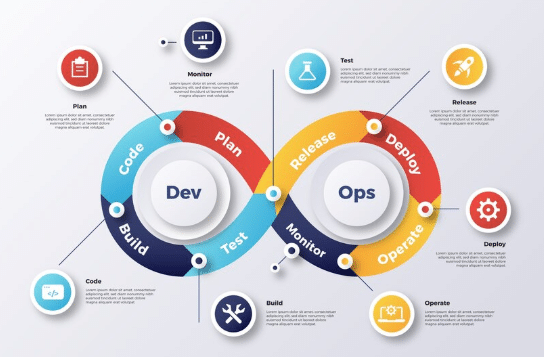Introduction to the Data Life Cycle
In today’s digital world, businesses collect data at every moment. From user clicks and online purchases to mobile app interactions and emails, data is constantly generated. But having data is not enough. What matters is how we manage it.
The data life cycle is the process of managing data from the moment it’s created to the time it’s securely destroyed. Companies that understand this cycle can make faster decisions, improve customer experiences, and protect sensitive information.
Stage 1: Data Creation
The life of data begins with creation. This happens when users interact with a system, fill out a form, make a transaction, or use a mobile app. Every digital action produces some form of data. These actions create raw, unfiltered information.
This stage is crucial because poor-quality data created here can damage every step that follows, whether it’s a customer’s email, a product review, or sensor data from a machine; accuracy and completeness during data creation matter.
Stage 2: Data Collection
Once data is created, it needs to be collected and brought into one place. This can happen in real time or on a scheduled basis. Websites use forms, tracking codes, and cookies to collect user behaviour. Businesses also use APIs to gather information from other platforms.
Effective data collection ensures that no valuable information is missed. It also helps organize data by type—such as text, numbers, or images—and keeps it ready for the next stage. Any errors here can create confusion and waste time later.
Stage 3: Data Storage
Collected data must be stored safely and accessible. Businesses today use cloud services, local servers, or hybrid models to store data. Cloud platforms like AWS, Azure, and Google Cloud are popular due to their flexibility and security.
Data storage needs to be well-organized. Without structure, important files can be lost or overwritten. Security is also essential here. Proper encryption, backup systems, and access control must be in place to protect customer privacy and business integrity.
Stage 4: Data Processing
Raw data is often messy. Before it can be used, it must go through processing. This includes removing duplicate records, correcting formatting errors, and organizing data into consistent formats.
Data processing ensures that the information is usable and clean. For example, customer names may be capitalized differently, dates may be formatted inconsistently, or product IDs may be duplicated. Cleaning and processing resolve these problems.
Without processing, analytics and decision-making can be based on flawed or incomplete data—leading to poor results and lost opportunities.
Stage 5: Data Analysis
Once processed, the real value of data begins to show. Data analysis is the stage where businesses examine the information to find patterns, trends, and insights. This is how companies learn about customer behaviour, product performance, and market demand.
Using tools like Excel, Power BI, or Tableau, businesses can analyze historical trends, forecast sales, or measure campaign success. A retail company might discover that most purchases occur on Fridays, while a healthcare provider might track patient appointment patterns.
Analysis helps convert data into knowledge—making it one of the most important parts of the cycle.
Stage 6: Data Interpretation
After analysis, it’s time to interpret the results. Interpretation means understanding what the data tells you and how it impacts your goals. It’s about context and action.
For instance, if your analysis shows a high bounce rate on your homepage, the interpretation could be that users aren’t finding what they need. This leads to decisions such as changing content layout or improving page speed.
Good interpretation turns numbers into strategies. It allows businesses to take informed actions that directly improve results.
Stage 7: Data Archiving
Not all data needs to stay active. Some information becomes outdated but may still hold value for future reference or legal compliance. Archiving is the process of storing such data in a secure, long-term environment.
Archived data should remain accessible but should not take up space in daily systems. It can include tax records, old user data, or completed project files. This helps reduce storage costs while ensuring that critical records are available when needed.
Archiving also supports disaster recovery and compliance with regulations.
Stage 8: Data Destruction
All data eventually reaches the end of its useful life. When it’s no longer needed, it should be destroyed properly. Keeping old, unused data increases security risks and may violate privacy laws.
Data destruction must be secure and permanent. Simply deleting files is not enough. Proper tools should be used to wipe data from servers or devices. In regulated industries, certificates of destruction may be required.
This final stage protects sensitive information and ensures compliance with standards like GDPR or HIPAA.
Why Managing the Data Life Cycle Matters
Ignoring the data life cycle leads to disorganization, poor decisions, and legal risks. But when each stage is handled carefully, data becomes a powerful business asset.
A well-managed life cycle improves data accuracy, enhances security, supports compliance, and allows businesses to make smart, fast decisions. It also reduces waste—of both time and money.
Data that flows smoothly through its life cycle helps organizations achieve goals, grow faster, and build trust with customers.
Challenges in the Data Life Cycle
Despite its importance, managing the life cycle is not easy. Many companies face problems like duplicate data, storage overload, slow processing, or inconsistent interpretation.
Others struggle with compliance issues or lack the tools to archive and destroy data properly. These problems can lead to financial losses or data breaches.
To avoid these issues, businesses need strong data governance, regular audits, and clear policies. Training staff on data handling also plays a big role.
Technology and Automation in Data Life Cycle
Modern tools and technologies simplify the life cycle process. Cloud computing allows for flexible storage. Machine learning helps with data processing. Dashboards provide easy-to-understand visual reports.
Automation reduces manual errors and speeds up the process. For example, automated workflows can collect, clean, and move data across systems without human input.
Using the right tools saves time, improves accuracy, and keeps data up to date in real-time.
Conclusion
The data life cycle is more than just a concept—it’s a strategy. From the moment data is created to the point it’s destroyed, each step must be managed with care. A single weak link can create problems throughout the system.
Businesses that understand and control this cycle gain a competitive advantage. They make better decisions, reduce risks, and build stronger relationships with their customers. In a world ruled by data, mastering its life cycle is not just useful—it’s essential.
Frequently Asked Questions
What is the purpose of the data life cycle?
The purpose is to manage data efficiently and securely from creation to destruction, ensuring it’s useful and compliant throughout its journey.
How can small businesses manage the data life cycle?
Small businesses can use cloud platforms and automation tools to manage data collection, storage, and basic analysis.
What happens if data is not destroyed properly?
Improper destruction can lead to data breaches, legal violations, and financial penalties.
Can data be reused after archiving?
Yes, archived data can be restored for analysis, auditing, or legal needs whenever required.
How often should data be reviewed in the cycle?
Businesses should review their data life cycle policies quarterly and update storage or processing methods as needed.





